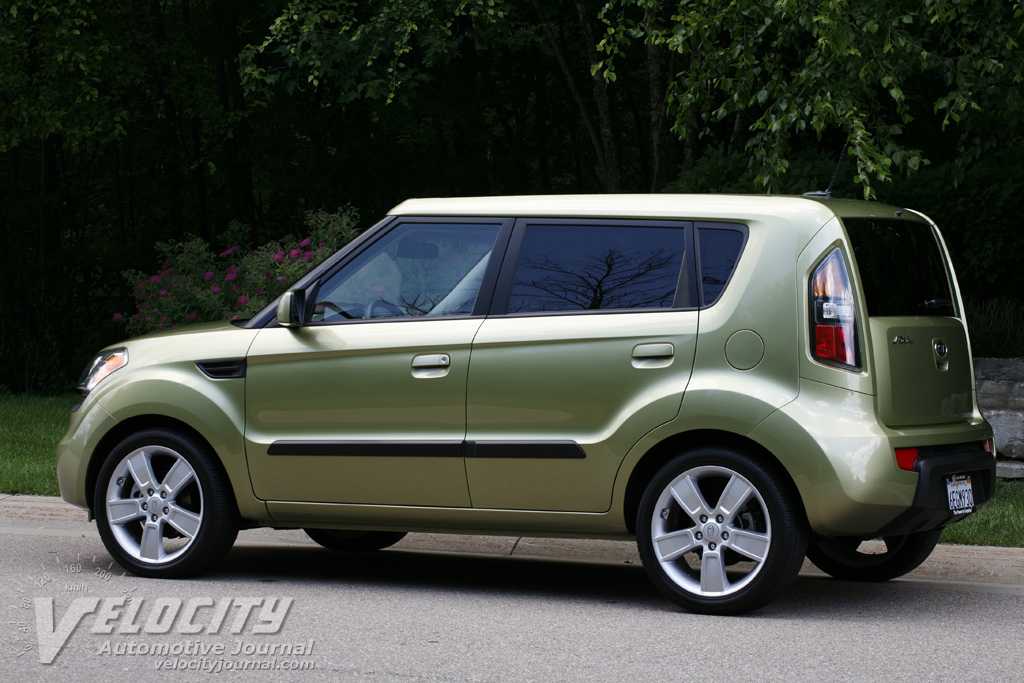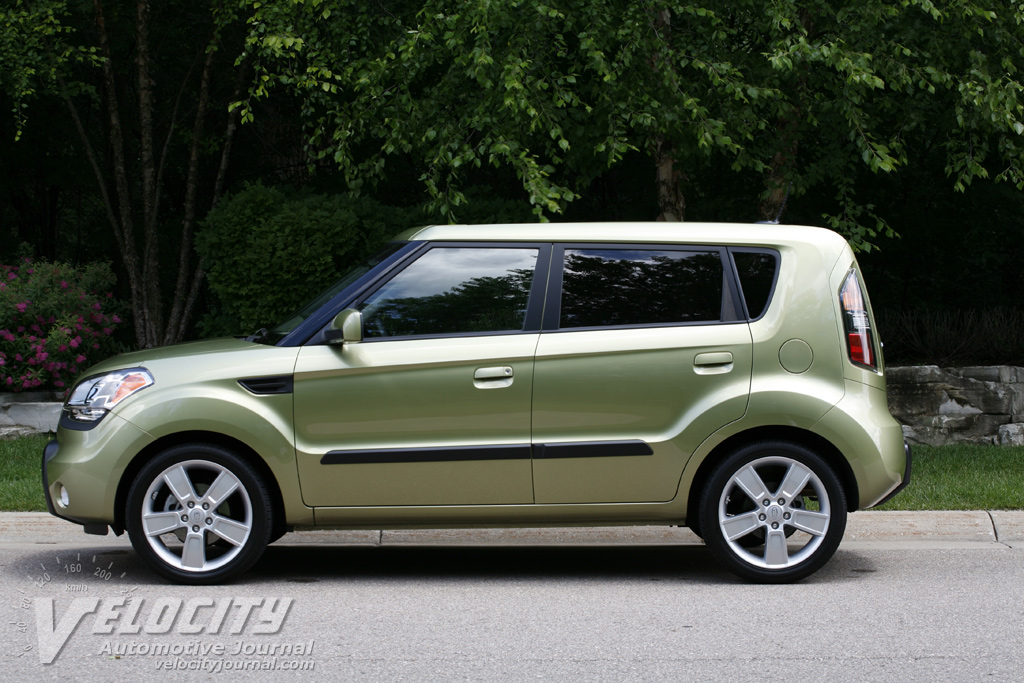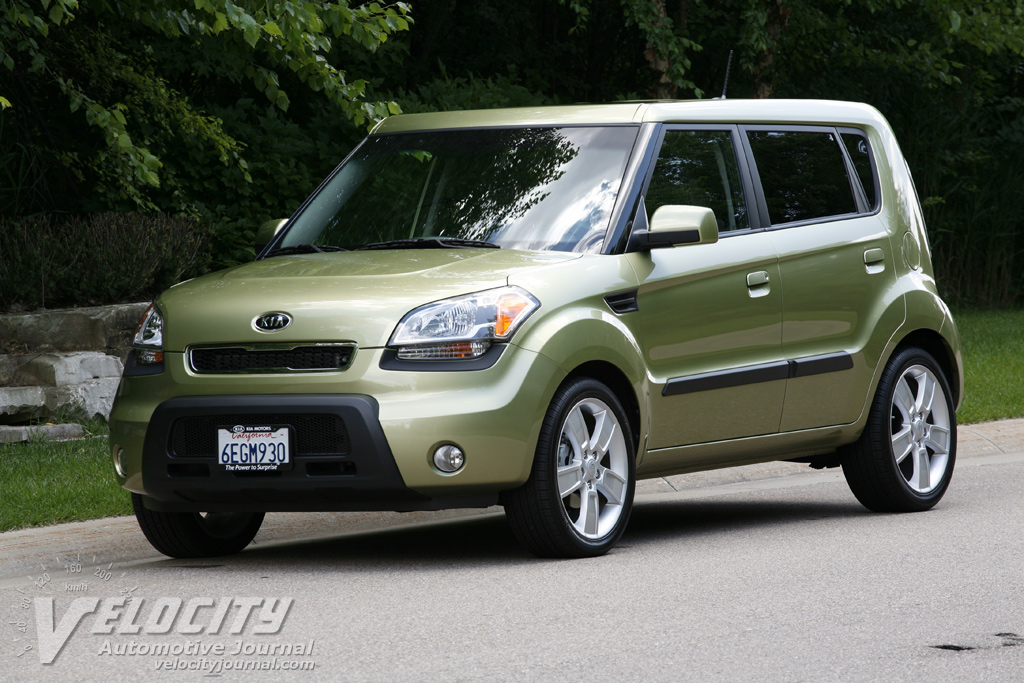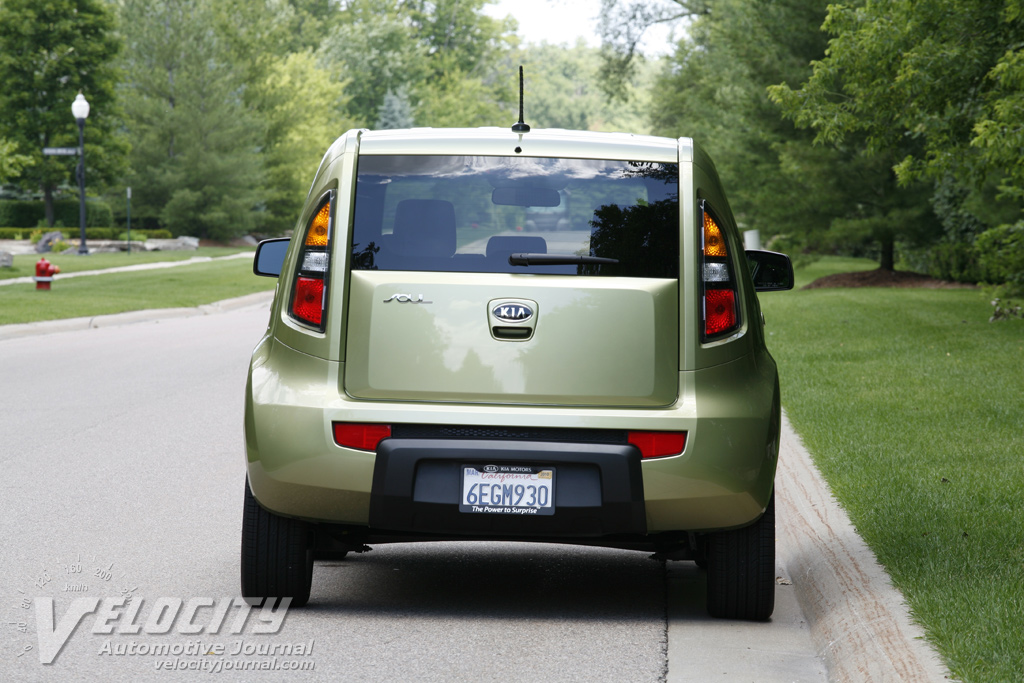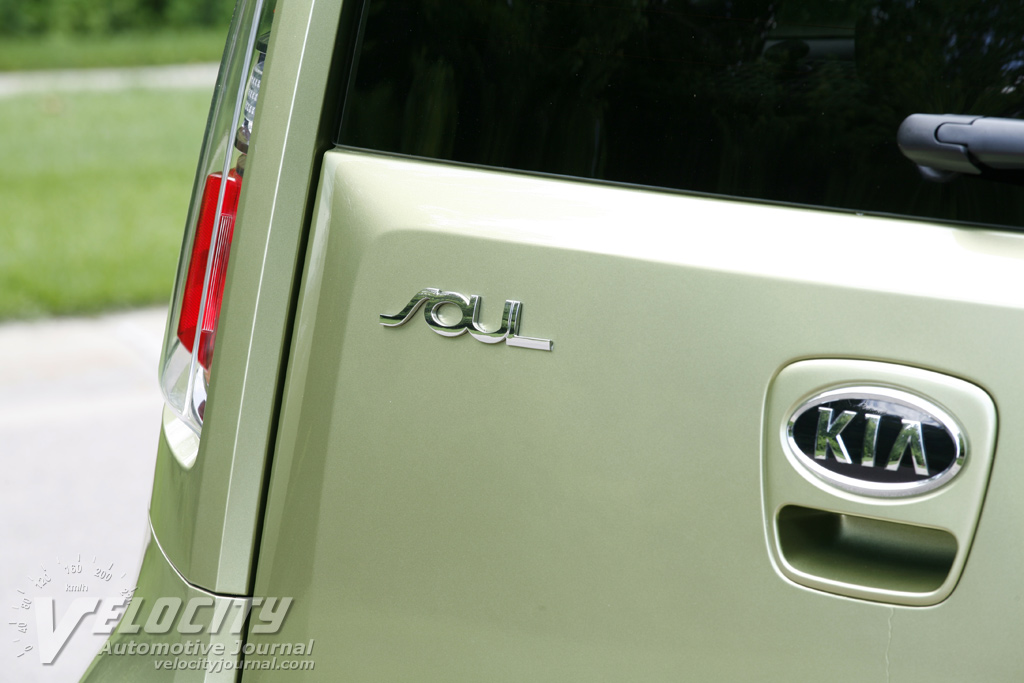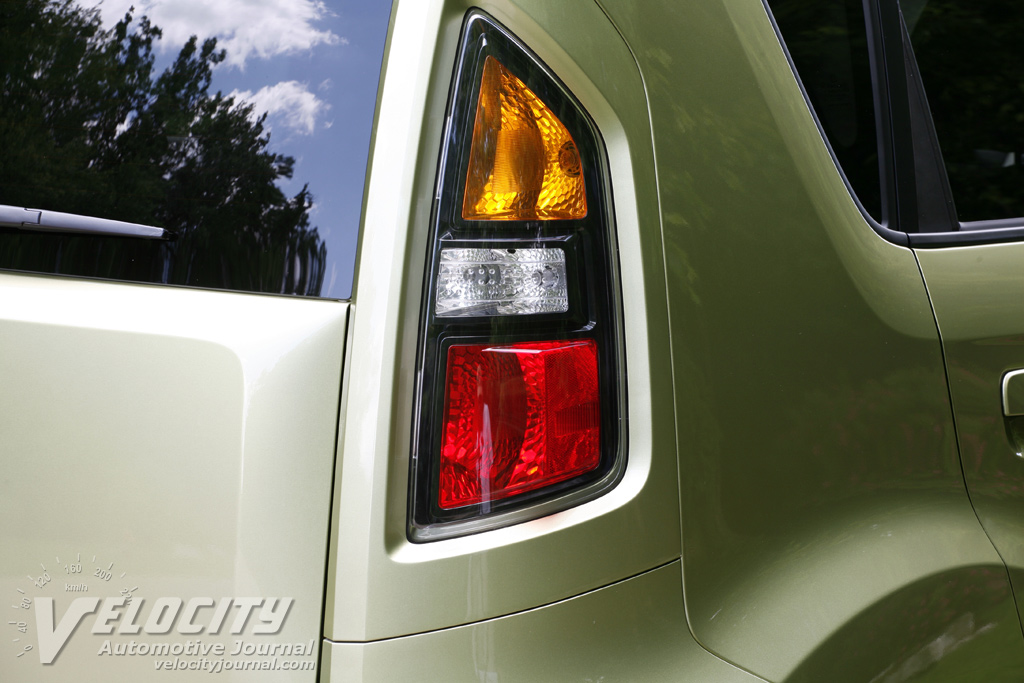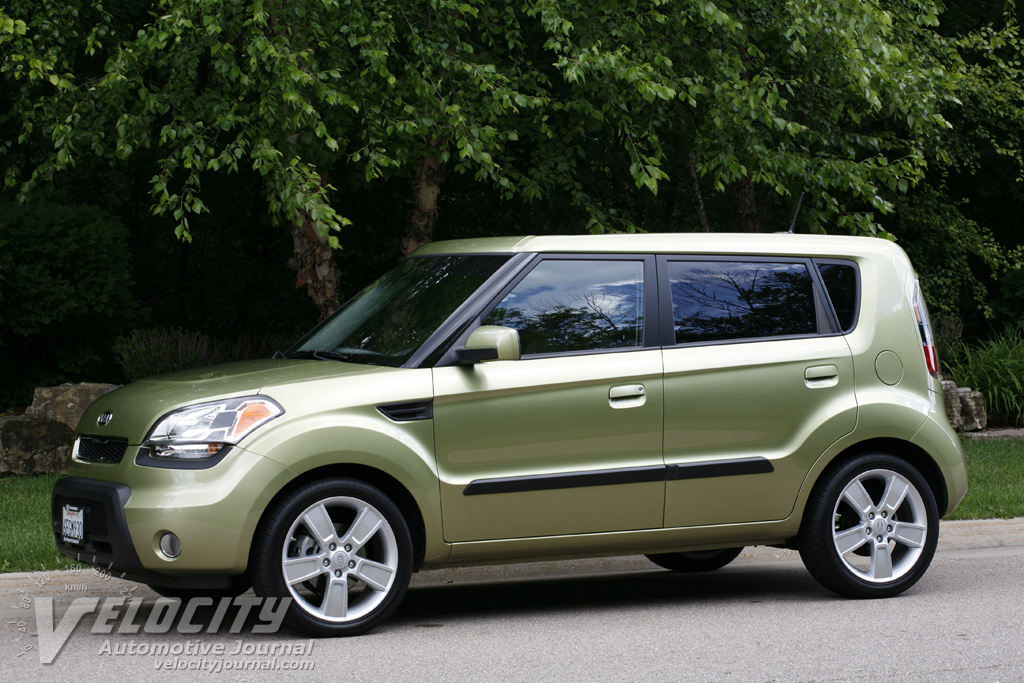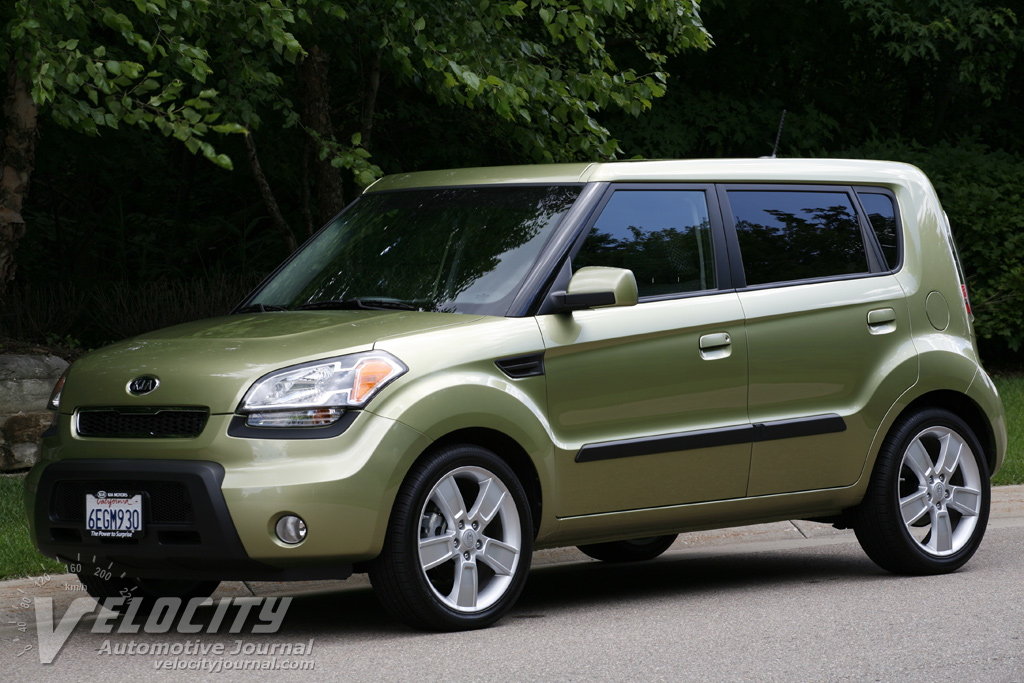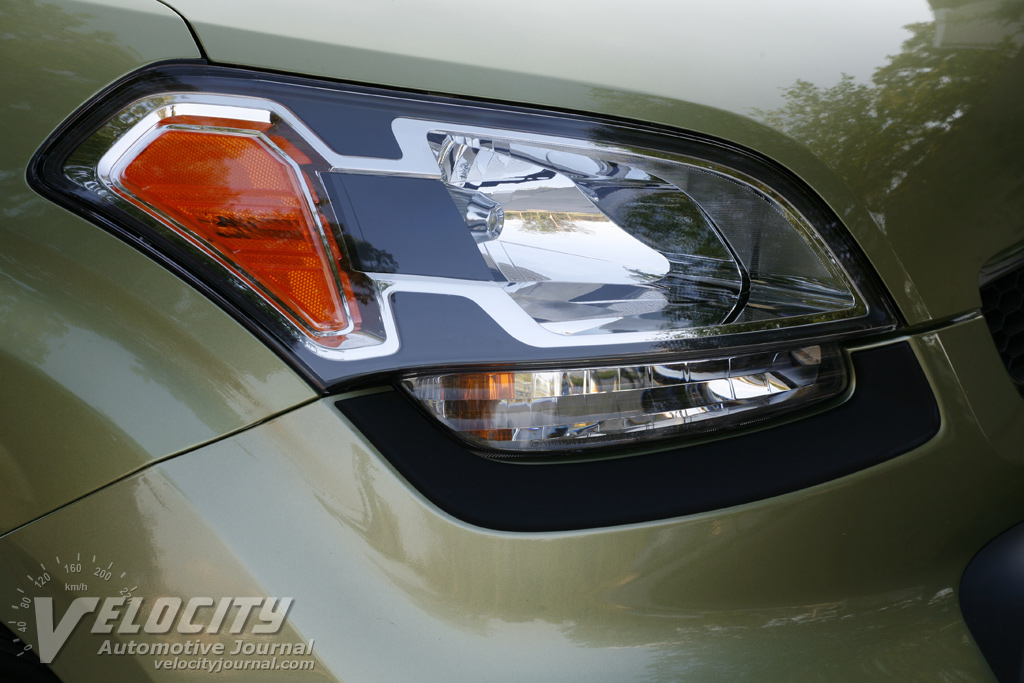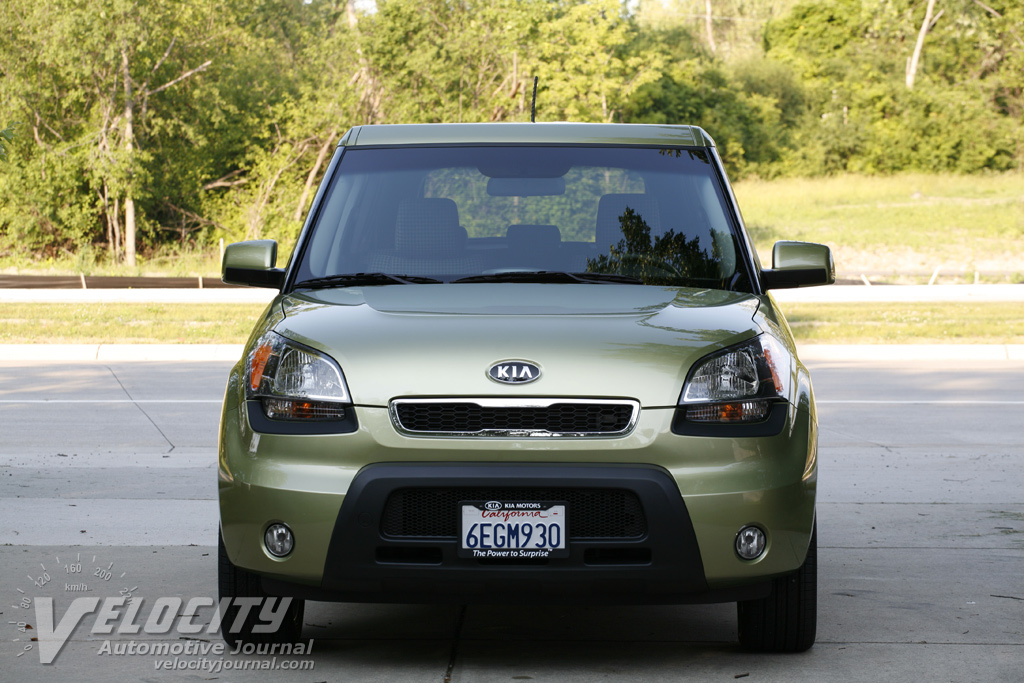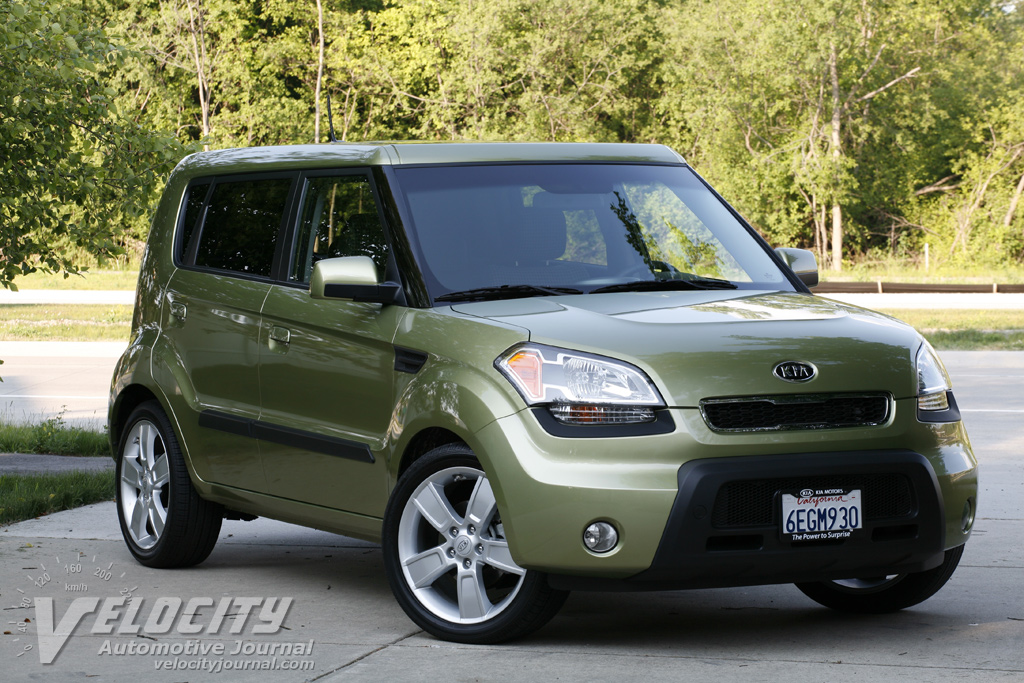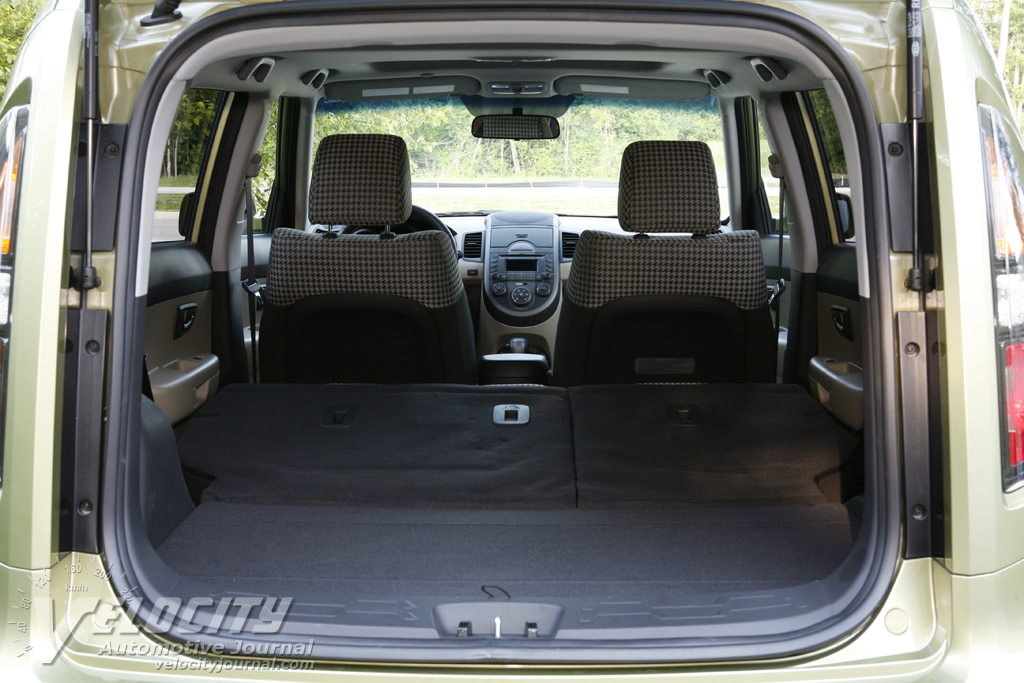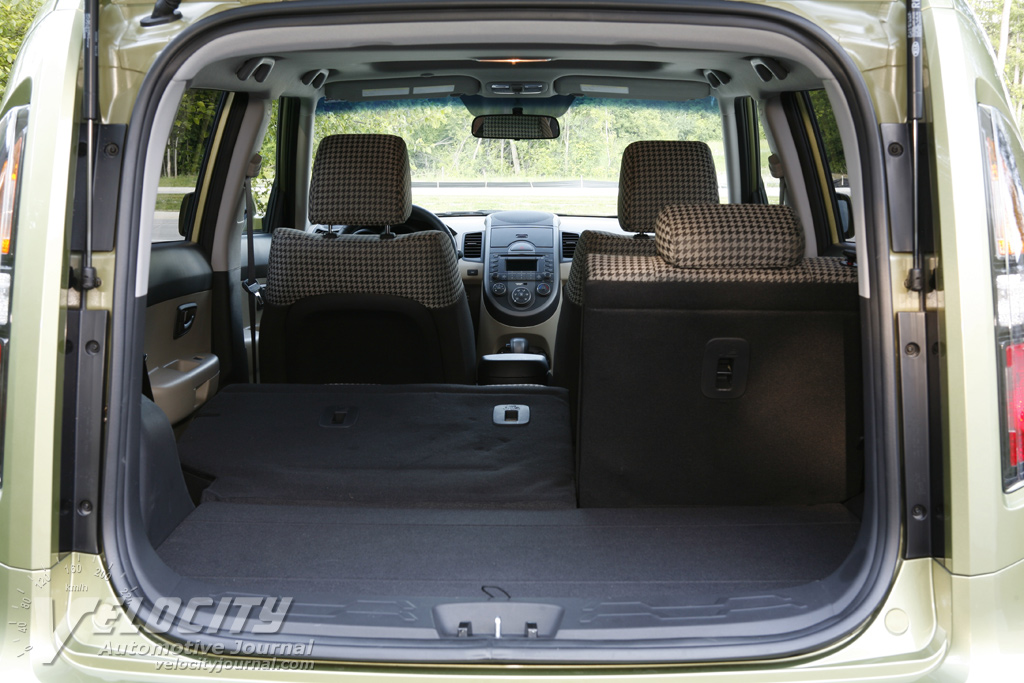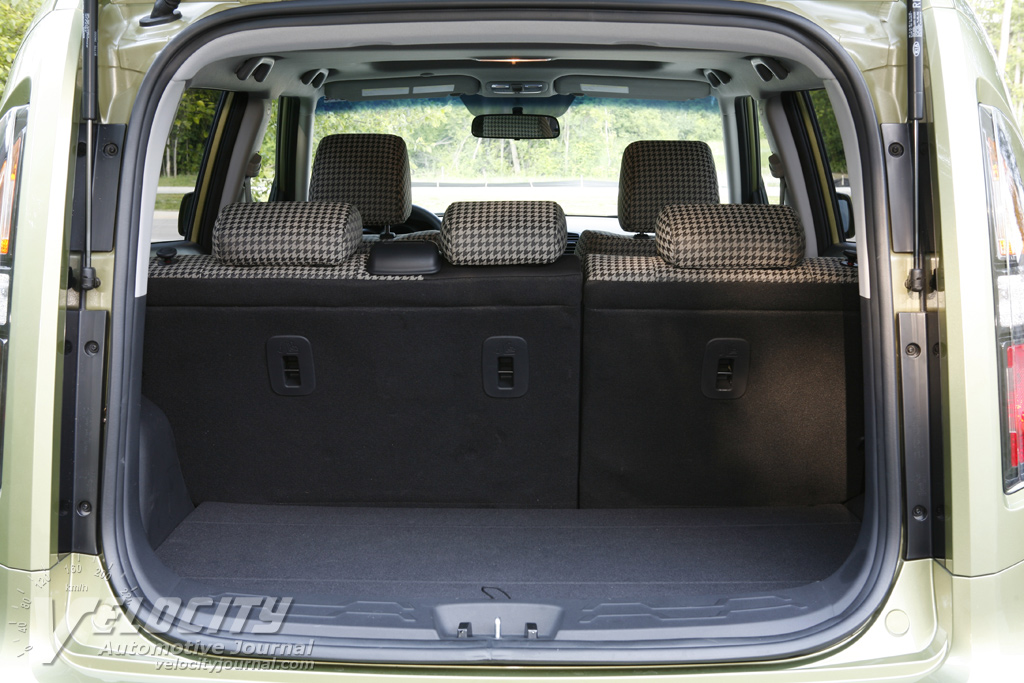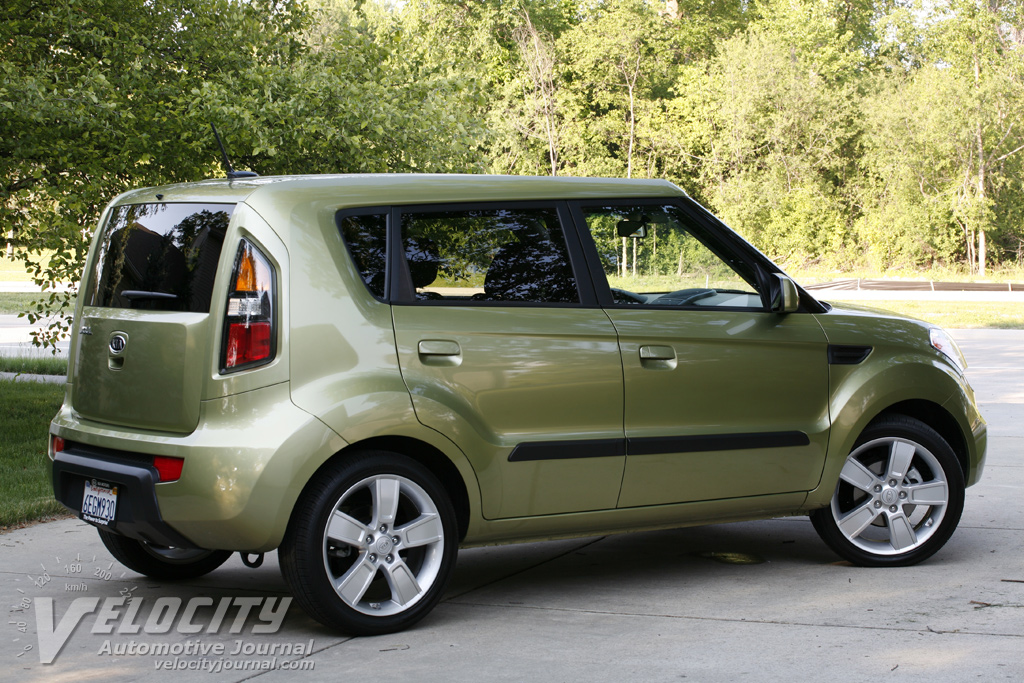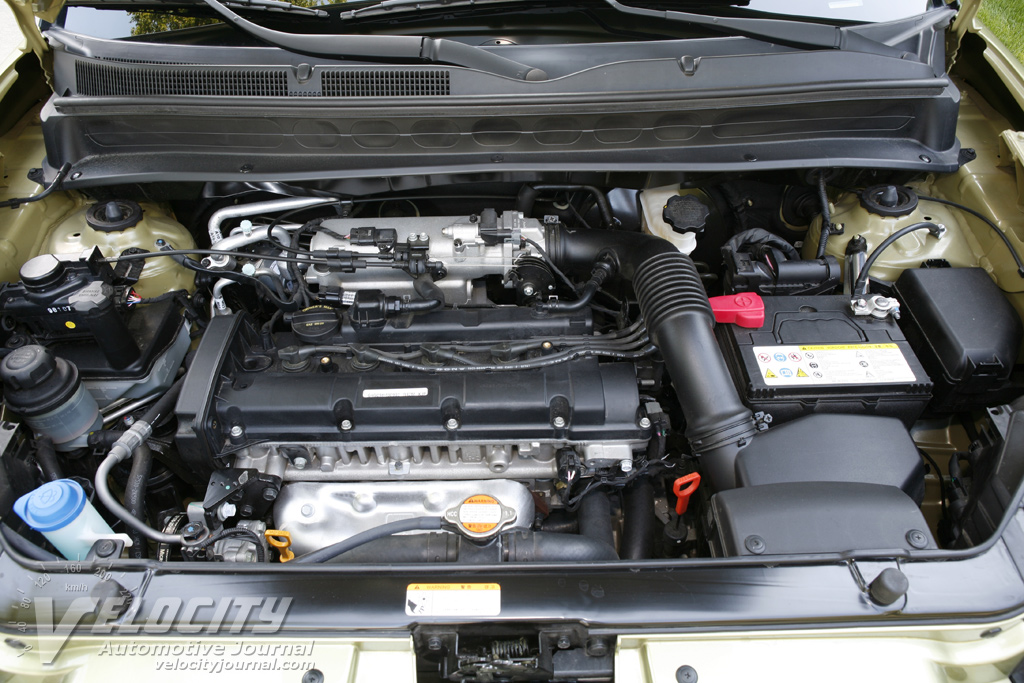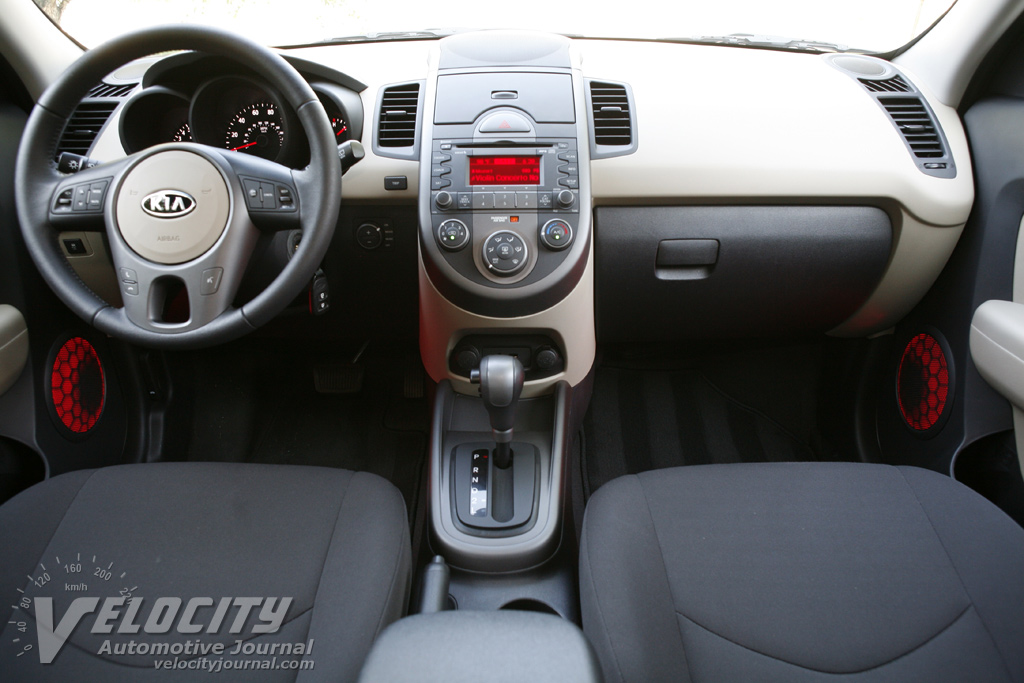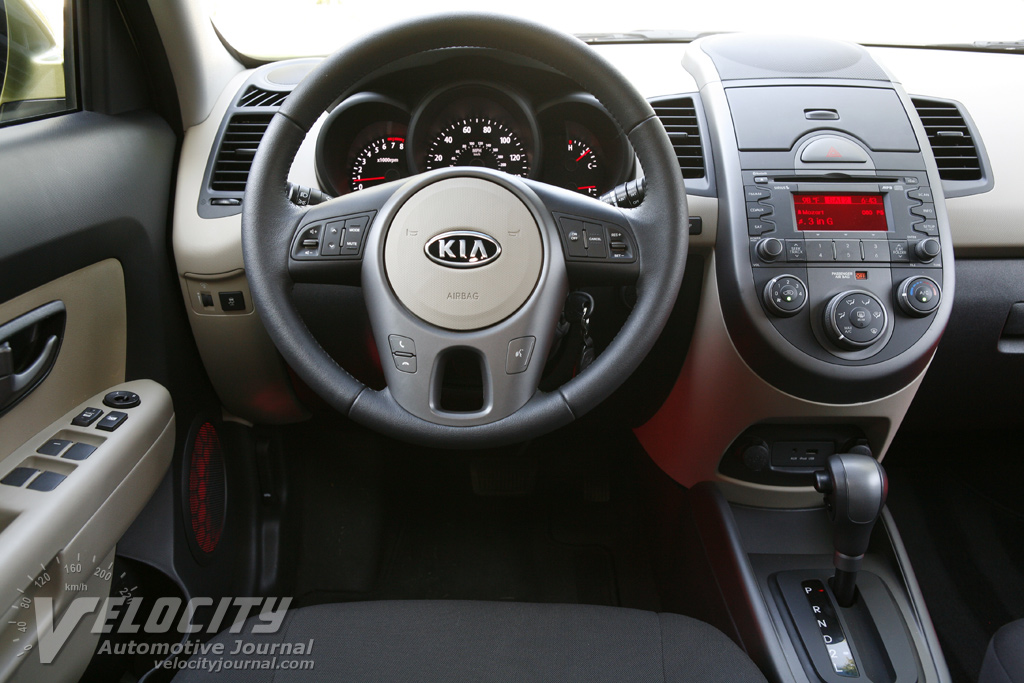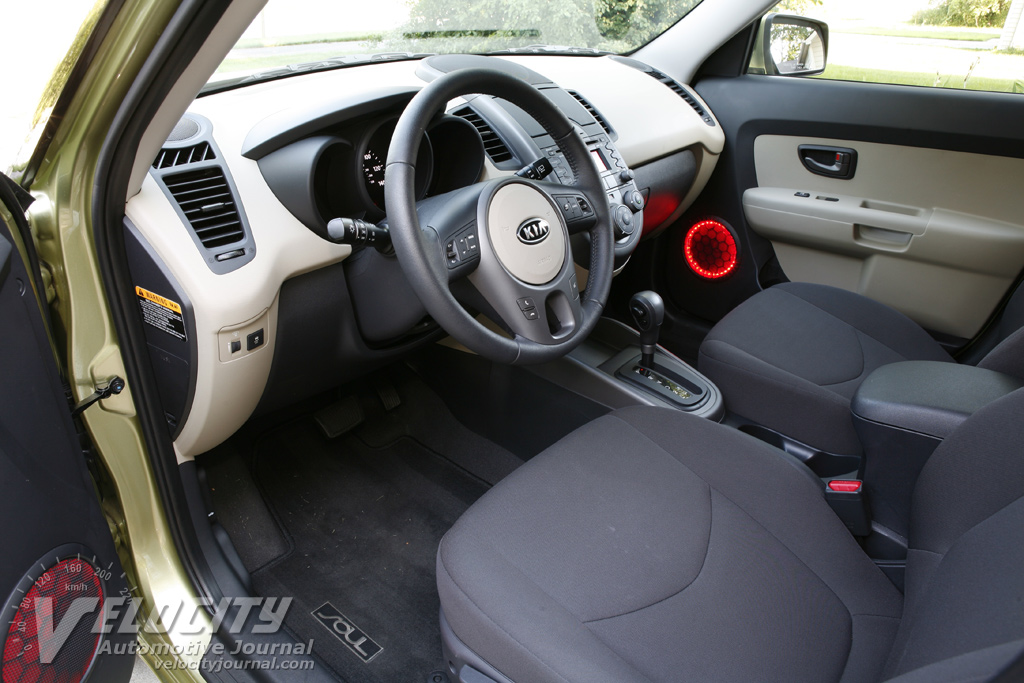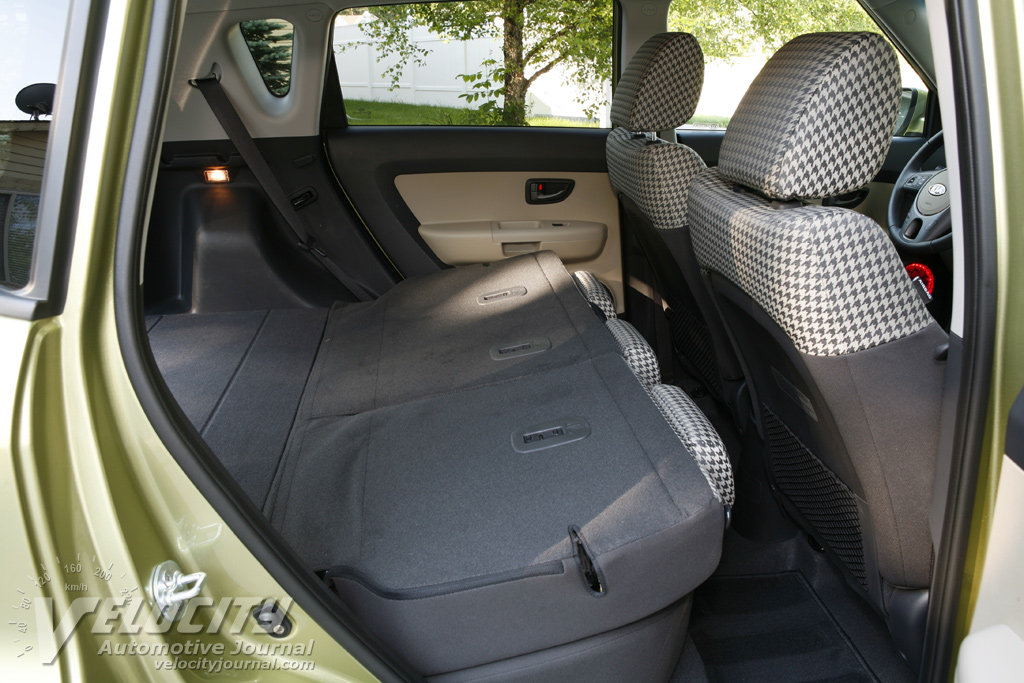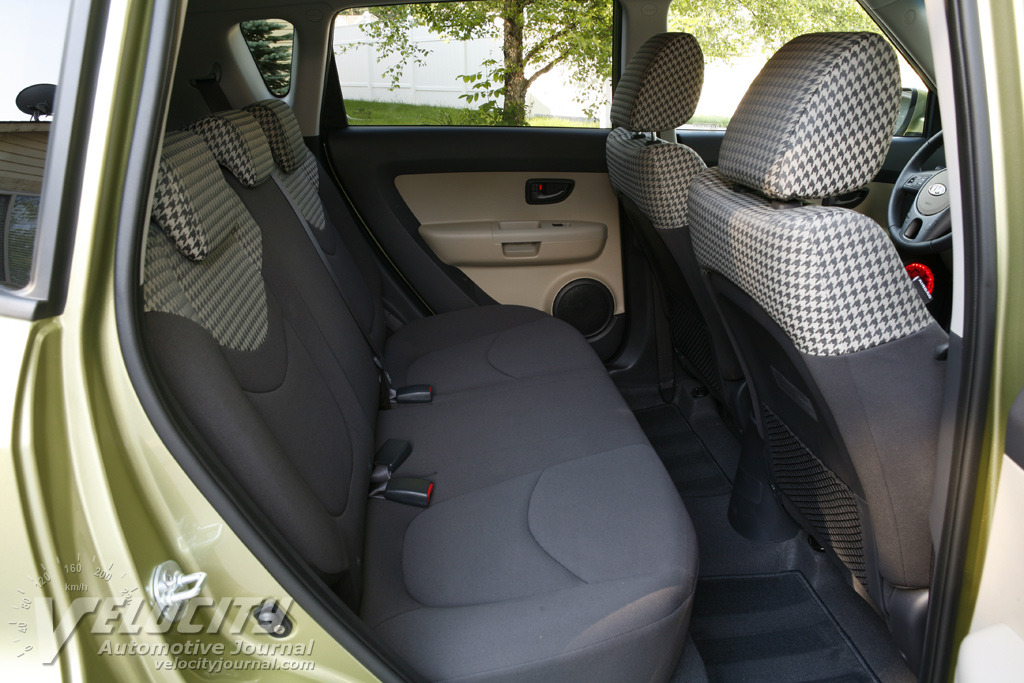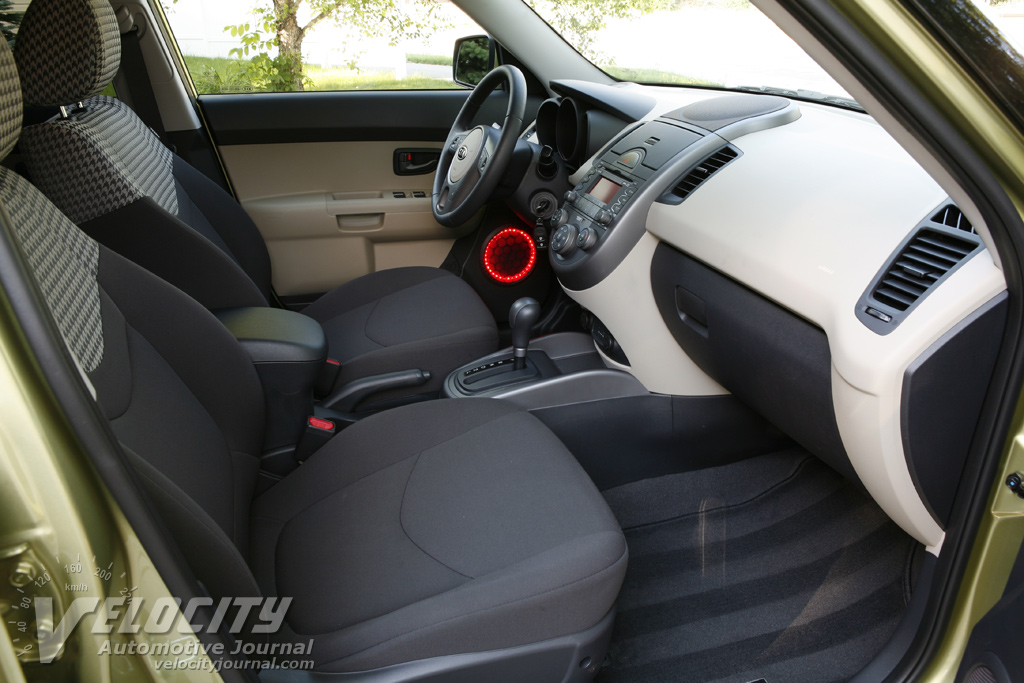2010 Kia Soul Exclaim
06/30/2009
Shahed Hussain
In the past few years, Kia has rapidly expanded its vehicle lineup beyond inexpensive compact and midsize cars; its portfolio now includes three SUVs, a minivan, and an entry luxury sedan. While this subsidiary of Hyundai still hangs on to its core values of affordability and value, Kia can now add eye-catching styling to its repertoire. The latest example is the new Soul, Kia's version of a boxy mini-wagon popularized by Scion. Like its Japanese competitors, the Nissan Cube and Honda Fit, the Soul offers ample interior room and fuel efficiency at an attractive price.
Kia sells its Soul in four trim levels, starting at a low $13,300 and topping out at $17,900 for the "!" (Exclaim) and sport models. Aside from the base Soul, powered by a 1.6L inline-4, all other models receive a larger 2.0L engine mated to a 5-speed manual or 4-speed automatic transmission. We tested a Soul Exclaim equipped with the automatic transmission. Notable standard features include 18-inch alloy wheels, sunroof, fog lights, and Sirius satellite radio. The total sticker price was $18,595, including the $695 freight and handling charge. The best value in the Soul lineup may be the 5-speed manual Soul +, which includes 16-inch alloy wheels and most of the desirable features of the Soul Exclaim for $16,140.
Inside the Soul is an attractive mix of contrasting black and "sand" (milky brown) hues. Most interior trim is hard plastic, but with above average panel fits. Interior mood lighting consists of pulsing red LEDs surrounding the front door speakers, controlled via a rotary knob on the dashboard. In the instrument binnacles are a center-mounted 140-MPH speedometer and an 8,000 RPM tachometer on the left; smaller fuel and coolant temperature gauges are on the right side of the speedometer. The leather wrapped steering wheel tilts, but the does not telescope; some drivers may find their arms too far from the wheel after adjusting the seat position. Buttons for audio, cruise control, and Bluetooth phone are conveniently located on the each of the steering wheel spokes. Clearly labeled knobs and buttons for the 6-speaker AM/FM/CD/MP3 audio system are at the top of the center stack. An auxiliary input and USB port allows MP3 players to interface with the audio system; dual 12V outlets on each side provide power for electronic accessories. Large knobs for the climate control system are at the bottom of the semi-circular center stack. Behind the shift lever are dual cupholders, with additional drink holders in the front door pockets.
The Soul's upholstery consists of slippery black cloth with a hounds tooth pattern on the upper seatbacks. Although the driver's seat has 6-way manual adjustments, the firm cushions and insufficient thigh bolstering proved uncomfortable for extended trips. A benefit of the Soul's angular proportions is generous front headroom, ample for occupants over 6-ft. tall. Rear passengers get generous headroom and legroom as well; even the middle position is more comfortable than expected, due to the nearly flat bench. With the 60/40 split rear seats folded down, the Soul offers an almost flat load floor and 53.4 cu. ft. for cargo; with the seats up, luggage capacity drops to 19.3 cu. ft. Under the rear floor cover is a hidden storage compartment for valuables.
Although Kia powers the base Soul with a 122-bhp 1.6L inline-4, most customers will probably prefer the larger 2.0L that equips all other models. This all-aluminum DOHC powerplant with continuously variable timing cranks out 142-bhp @ 6,000 RPM and 137 lb.-ft. @ 4,600 RPM. The 2.0L is smooth-running, but like most other comparable 4-cylinder engines becomes increasing raucous as it approaches redline. In most normal driving we rarely needed to push into the upper reaches of the rev band; the Soul's curb weight of only 2,820 lbs. allows decent acceleration even with the wide ratio 4-speed automatic. The Soul will easily cruise at 80+ MPH with no fuss, although the engine gets somewhat buzzy at the speed.
Despite having only four speeds, the Soul's automatic transmission provides pleasantly snappy acceleration, no doubt due to the short 4.375:1 final drive ratio. The 5-speed manual is undoubtedly quicker, but the automatic uses a taller top gear for lower engine RPM on the highway. Nonetheless, a 5-speed automatic would make better use of the available power, and ensure smoother shifts by bridging the gap between second and third gear. According to the EPA, the Soul equipped with the automatic achieves 24/30 MPG (city/hwy.), matching the manual gearbox. For comparison, the base 1.6L Soul manages 26/31 MPG (city/hwy), a marginal improvement over the 2.0L powerplant.
All Soul models get disc brakes at all four wheels: 11.0 in. diameter vented rotors (front) and 10.3 in. rotors (rear). ABS and Electronic Stability Control (ESC) are standard. Pedal feedback is above average and the brakes have no difficulty slowing the Soul. During our testing in mostly dry weather, we never invoked the stability control, which can be disabled via a dash-mounted button.
Kia wisely dialed-in minimal power assist for the rack-and-pinion steering system, resulting in high effort in parking lot maneuvers, but adding reassuring heft to steering inputs at higher speeds. Excellent steering feedback and sharp turn-in response endows the Soul with nimble reflexes atypical for vehicles in this class.
The Soul employs a conventional MacPherson strut front suspension with coil springs, dampers, and a stabilizer bar; the simple torsion beam rear suspension uses coil springs and dampers. Chunky 18-inch alloy wheels and 225/45R18 Hankook Optimo H426 tires fill out the wheel wells. The V-rated Hankooks provide excellent grip on dry roads; only full throttle in first gear will cause the tires to break loose, and then only for moment. The fat 225-section tires and Soul's 137 lb.-ft. torque output ensure minimal understeer; torque steer is a nonexistent as well. Kia's engineers tuned the suspension with stiff spring rates and tight damping to minimize body roll, but at the expense of a jiggly ride over broken pavement. The rear beam axle stays planted on most surfaces, but hops around enough to unsettle the Soul on potholed roads. For a more compliant ride, consider the Soul +, equipped with 16-inch wheels and taller sidewall 205/55R16 tires.
The appropriately named Soul shows that Kia is no longer content to be considered just inexpensive transportation, but is serious about becoming a full-line manufacturer. We consider the Soul Exclaim a credible alternative to the Scion xB and Nissan Cube, and arguably a better value than either when similarly equipped. Overall, we were impressed with this box-like wagon, but more supportive seats, a 5-speed automatic, and a retuned suspension would enhance the Soul's appeal further. Despite our minor reservations, the Soul's distinctive styling, sharp handling, and spacious interior should certainly bring more customers to Kia dealers.

